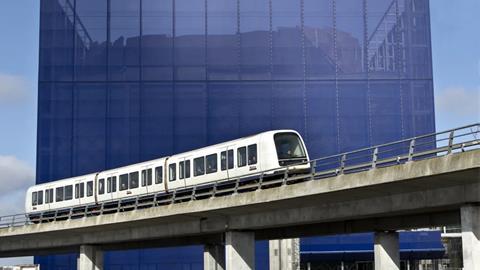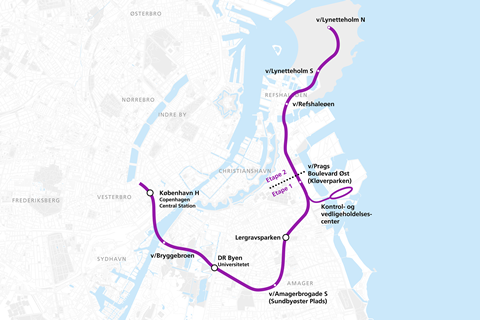
DENMARK: The city of København and the national government have approved the construction of the proposed metro Line M5 as part of a wider agreement for the development of the artificial island of Lynetteholm as a new urban district and to protect the capital from rising sea levels and storm surges.
Two phases

Under the agreement signed on March 28 the DKr18·7bn first phase of M5 is to open in 2036. It would start at the main København H railway station and transport hub and run in bored tunnel to stations at Bryggebroen, DR Byen, Amagerbrogade Syd and Lergravsparken, ending at an elevated station at Prags Boulevard.
The DKr3·9bn elevated Phase 2 planned to open in 2045 would extend the line to Refshaleøen, Lynetteholm Syd and Lynetteholm Nord.
M5’s København H station would have provision for a possible extension to Gammel Kongevej and to Østerport, subject to future funding.
‘The decision to establish M5 is a milestone for the city and the result of extensive preparatory work’, said Carsten Riis, CEO of metro authority Metroselskabet. ‘Now, we look forward to making the far-sighted political visions a reality’.
Urban developments

When Lynetteholm and the rest of Østhavn area are fully developed in 2070 they are expected to house 80 000 residents and 45 000 jobs, helping to address housing cost increases in the capital.
Line M5 will also serve existing urban areas on the island of Amager, and increase overall metro capacity to ensure that the network can meet expected ridership growth, especially on the M1/M2 cross-harbour corridor from Kongens Nytorv to Amagerbro which is already under pressure during the peaks.
M5 is expected to have 91 000 daily riders in 2050 rising to 134 000 in 2070, and allowing for people who currently use existing lines is predicted to provide overall growth across the metro network of 78 000 daily riders in 2050 and 124 000 in 2070.
‘With this agreement, København can create a completely new district with different types of housing, so that our capital continues to develop and be an attractive city for everyone and with good public transport connections to other districts’, said Minister of Finance Nicolai Wammen when the agreement was signed on March 28. ‘More than 300 000 passengers take the metro every day, and that number will only increase in the coming years.’



